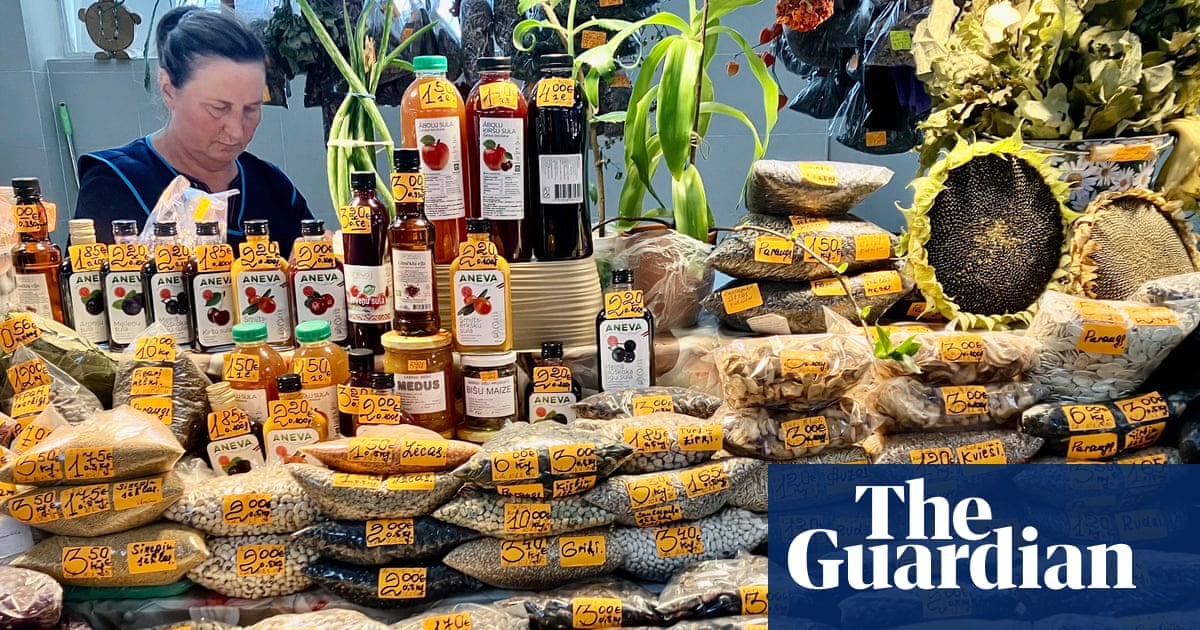
Saturday morning and I am roaming the broad aisles of Wing Yip, the thrilling Asian supermarket in Croydon, trying to bring colour to a life of monochrome. Occasionally, I glance from my phone’s screen to the parade of jars, like a lost child looking for a parent in the crowd. There are a few of us like this here today; the baffled, hopeful and pathologically hungry, with ingredient lists for dishes so very far from our comfort zones.
Happily, I have a guide. Her name is Fuchsia Dunlop. The image on my phone is a photograph from her book, The Food of Sichuan. It’s a set of Chinese characters for sweet flour sauce, a paste close to, but subtly different from, hoi sin. Unhelpfully, it has a bunch of different names in English. Photographing the Chinese characters is Dunlop’s suggestion and praise be, it works. I quickly find an ingredient for twice-cooked pork, one of my favourite Sichuan dishes.
While it might be possible to approximate the dish without that particular sauce, I couldn’t do it without Dunlop’s book; it really is the key ingredient. The Food of Sichuan is a detailed, sometimes nerdy, often romantic guide-cum-travelogue through what many consider the most intricate and vivid of all the regional Chinese cooking traditions. This year sees the 20th anniversary of its first publication, an event marked by an expanded new edition, complete with endorsements from the likes of Ken Hom and, er, me. I describe it as “my bible for the subject”, and not unfairly; it is far more nourishing than any religious tract could ever be. It is that most beautiful of things: a window through which to glimpse, and occasionally participate in, another kind of life.
Dunlop grew up in Oxford. Her mother taught English as a foreign language, and often invited her students round to cook their food from home. Early on Dunlop began noting down recipes, a habit which stayed with her when, in the 90s, she went to the city of Chengdu in Sichuan province to study at the city’s university and learn the language. “During a trip to a nearby fishing village I was scribbling down recipes for what we had just eaten,” Dunlop says now. “My Danish friend Marianne said I should write a book.” Later, she spent three months studying at the Sichuan cookery school, the first non-Chinese person to do so. “I was very rigorous in taking notes.”
Dunlop could see a gap in the market. “There weren’t any Chinese cookbooks [in the west] that had been researched on the ground, in the way they had for the Middle East or Italy,” she says. Publishers were less convinced; her first proposal was turned down by all of them for being “too narrow”. A year later she tried again. This time she was successful. The world was introduced to the surprising delicacy of dishes intertwining red chillies with numbing Sichuan peppercorns; to the choreographed dance of salt and sweet and sour; to the joys of fuhewei, the compound flavours that give these dishes their showy, high-kicking appeal.
Like all the best cookbooks, it places the dishes in context. “It’s one of those books that has to be started at the back,” says the chef Jeremy Pang, who runs the School of Wok in central London. He’s not wrong: that’s where you’ll find lists of seasonings and stocks, and an account of the “23 flavours of Sichuan”: the numbing and hot, the scorched chilli, the fragrant-boozy and more. Meanwhile, at the front there are pages on the 56 cooking techniques and the many different knife cuts. “Chinese cooking is so complex,” Pang says, “and this book shines a light on that.” He also loves the way it moves an understanding of Sichuan food far beyond the obvious headline appeal of chillies and peppercorns. “As Fuchsia says, texture is vital.” He professes a love for the white pork in garlicky sauce and the steamed aubergine with scorched green peppers, to be eaten hot or cold.
Chef Andrew Wong, of the much-admired London restaurant A Wong, is also a huge fan. “The recipes are accurate in a way lots of Chinese cookbooks really aren’t,” he says. (Impressively, an edition in Chinese has just been published in China.) Are there any recipes he turns to regularly? “There was a point when I was always making her fish-fragrant aubergine.” The key thing, Wong says, is Dunlop’s foresight. “She was ahead of her time in recognising that the food would catch on.” Dunlop is partly responsible for that, too. She was a consultant to London’s Barshu, the first specifically Sichuan restaurant in the UK, which opened in 2006. Now Sichuan restaurants are everywhere. “I’m surprised by the speed with which it spread,” she says. “Then again I did know how appealing the food would be.”
I decide to have a go at that twice-cooked pork, the gong bao prawns and mapo tofu, all dishes I know well from my eating adventures in restaurants. It gives me something to benchmark my efforts against. Dunlop’s directions are clear. Nevertheless, cooking this food is challenging. Quickly my kitchen degenerates into barely controlled chaos. Surfaces fill with bowls: of chopped spring onions here and fermented black beans there; of red chillies mixed in with peppercorns; of sauces blending Shaoxing wine and Chinkiang vinegar. Eventually I abandon the idea of doing three dishes. The mapo tofu is put off for another day.
I simmer the slab of pork belly with aromatics, let it cool then slice it up to be wok fried. This recipe, like many of them in The Food of Sichuan, uses the language of the subjective. The meat must be fried until it smells “delicious”; livid-red Sichuan chilli paste must be cooked out in oil until it smells “wonderful”. Dunlop is consistent in this. The recipe for mapo tofu, that classic dish of cubed, wobbly bean curd in a cheek-slapping sauce, also requires the chilli paste be cooked until “wonderful”. I do as I’m told. Wonderful is what I crave. Wonderful is what I need.
To my shame, I scorch the chillies in an overly hot wok for the gong bao prawns and curse myself. Nevertheless, I finish with food I recognise; it is the first time I have cooked dishes at home resembling those I’ve eaten in Chinese restaurants. There’s that twice-cooked pork, with shoots of brilliant green and a rust-coloured sauce of fermented beans; there are fat prawns like punctuation marks with cashews and the waft of Shaoxing wine; and, a day or two later, that most comforting of fearsome-looking dishes, the mapo tofu. The washing up may be copious. The work surfaces may be splattered. But this belly says, “Thank you Fuchsia. You took me somewhere else.”
The Food of Sichuan by Fuchsia Dunlop (Bloomsbury, £30). Buy a copy for £26.10 from guardianbookshop.com
News bites
London’s Riding House Café has launched Soul Ride, a delivery offering available to much of the UK, which draws upon chef-patron Henry Omereye’s love for and knowledge of Caribbean food. The brunch box for £55 includes a smoked pepper stew with coconut and avocado, buttermilk pancake mix and a sorrel and hibiscus prosecco, while the stonking £120 Soul Ride Weekender Box contains salt cod fritters, curry mutton, jerk chicken burgers and a sticky date and spiced rum pudding, among many other things (ridinghouseathome.com).
Leiths School of Food and Wine has created an expanded set of online cookery courses during lockdown. Alongside the full 24-week professional, accredited ‘essential cooking certificate’ they are also now running shorter courses, including one aimed at 13-to-18-year-olds and another on the essentials of ‘plant-based’ food. The latter runs for six weeks and costs £295 (leiths.com).
The team behind Manchester’s Escape to Freight Island site has, with enviable optimism, announced a food and drink festival from 28 to 31 May. The Kantina Weekender will feature chefs including Mary-Ellen McTague from Chorlton’s Creameries, Gary Usher from Elite Bistros, Stosie Madi from Parker’s Arms and Sam Buckley from Stockport’s Where The Light Gets In. They will all be teaming up with food and drink operators who are already part of the food and drink market. Tickets cost £35, charged back against your food and drink spend. To book, visit kantinaweekender.com.












